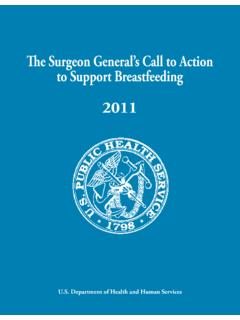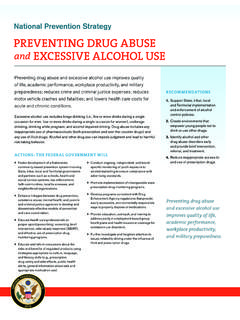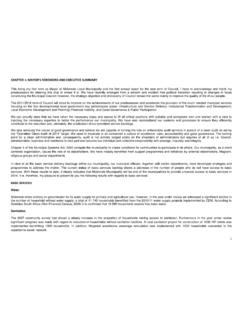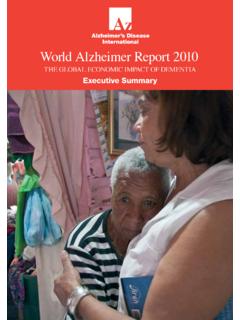Transcription of The Health Consequences of Involuntary Exposure to Tobacco ...
1 Department of Health and Human ServicesThe Health Consequencesof Involuntary Exposureto Tobacco SmokeA Report of the Surgeon GeneralCenters for Disease Control and PreventionCoordinating Center for Health PromotionNational Center for Chronic Disease Prevention and Health PromotionOffice on Smoking and HealthSuggested Department of Health and Human Services. The Health Consequences of Involuntary Exposure to Tobacco Smoke: A Report of the Surgeon General Executive Summary. Department of Health and Human Services, Centers for Disease Control and Prevention, Coordinating Center for Health Promotion, National Center for Chronic Disease Prevention and Health Promotion, Office on Smoking and Health , 2006To download copies of this document from the Web:Go to order single copies of this document: Call toll free 1-800-CDC-INFO (1-800-232-4636).
2 Information is available in English and Spanish, 24 hours/day, 7 text telephone for hearing impaired, dial more information about this document:E-mail of the full report (stock no. 017-024-01685-3) may be purchased from: Superintendent of Government Printing Box 371954 Pittsburgh, PA 15250-7954 Toll-free: 1-866-512-1800 Web site: of trade names is for identification only and does not constitute endorsement by the Department of Health and Human Health Consequencesof Involuntary Exposure to Tobacco SmokeA Report of the Surgeon DEPARTMENT OF Health AND HUMAN SERVICESP ublic Health ServiceOffice of the Surgeon GeneralRockville, MDMessage from Michael O.
3 LeavittSecretary of Health and Human ServicesThis Surgeon General s report returns to the topic of the Health effects of Involuntary expo-sure to Tobacco smoke. The last comprehensive review of this evidence by the Department of Health and Human Services (DHHS) was in the 1986 Surgeon General s report, The Health Con-sequences of Involuntary Smoking, published 20 years ago this year. This new report updates the evidence of the harmful effects of Involuntary Exposure to Tobacco smoke. This large body of research findings is captured in an accompanying dynamic database that profiles key epide-miologic findings, and allows the evidence on Health effects of Exposure to Tobacco smoke to be synthesized and updated (following the format of the 2004 report, The Health Consequences of Smoking).
4 The database enables users to explore the data and studies supporting the conclu-sions in the report. The database is available on the Web site of the Centers for Disease Control and Prevention (CDC) at I am grateful to the leadership of the Surgeon General, CDC s Office on Smoking and Health , and all of the contributors for preparing this important report and bringing this topic to the forefront once smoke, also known as environmental Tobacco smoke, is a mixture of the smoke given off by the burning end of Tobacco products (sidestream smoke) and the mainstream smoke exhaled by smokers.
5 People are exposed to secondhand smoke at home, in the workplace, and in other public places such as bars, restaurants, and recreation venues. It is harmful and hazardous to the Health of the general public and particularly dangerous to children. It increases the risk of serious respiratory problems in children, such as a greater number and severity of asthma attacks and lower respiratory tract infections, and increases the risk for middle ear infections. It is also a known human carcinogen (cancer-causing agent).
6 Inhaling secondhand smoke causes lung cancer and coronary heart disease in nonsmoking have made great progress since the late 1980s in reducing the Involuntary Exposure of nonsmokers in this country to secondhand smoke. The proportion of nonsmokers aged 4 and older with a blood cotinine level (a metabolite of nicotine) indicating Exposure has declined from 88 percent in 1988 1991 down to 43 percent in 2001 2002, a decline that exceeds the Healthy People 2010 objective for this measure. Despite the great progress that has been made, invol-untary Exposure to secondhand smoke remains a serious public Health hazard that can be prevented by making homes, workplaces, and public places completely smoke-free.
7 As of the year 2000, more than 126 million residents of the United States aged 3 or older still are estimated to be exposed to secondhand smoke. Smoke-free environments are the most effective method for reducing exposures. Healthy People 2010 objectives address this issue and seek optimal protection of nonsmokers through policies, regulations, and laws requiring smoke-free environments in all schools, workplaces, and public places. ForewordThis twenty-ninth report of the Surgeon General documents the serious and deadly Health effects of Involuntary Exposure to Tobacco smoke.
8 Secondhand smoke is a major cause of disease, including lung cancer and coronary heart disease, in healthy 2005, it was estimated that Exposure to secondhand smoke kills more than 3,000 adult nonsmokers from lung cancer, approximately 46,000 from coronary heart dis-ease, and an estimated 430 newborns from sudden infant death syndrome. In addition, secondhand smoke causes other respiratory problems in nonsmokers such as coughing, phlegm, and reduced lung function. According to the CDC s National Health Interview Survey in 2000, more than 80 percent of the respondents aged 18 years or older believe that secondhand smoke is harmful and nonsmokers should be protected in their of chemical compounds in secondhand smoke, including nicotine, car-bon monoxide, and Tobacco -specific carcinogens, can be detected in body fluids of exposed nonsmokers.
9 These exposures can be controlled. In 2005, CDC released the Third National Report on Human Exposure to Environmental Chemicals, which found that the median coti-nine level (a metabolite of nicotine) in nonsmokers had decreased across the life stages: by 68 percent in children, 69 percent in adolescents, and 75 percent in adults, when samples collected between 1999 and 2002 were compared with samples collected a decade earlier. These dramatic declines are further evidence that smoking restrictions in public places and workplaces are helping to ensure a healthier life for all people in the United States.
10 However, too many people continue to be exposed, especially children. The recent data indicate that median cotinine levels in children are more than twice those of adults, and non-Hispanic blacks have levels that are more than twice as high as those of Mexican Americans and non-Hispanic whites. These disparities need to be better understood and reviewed in this report indicates that smoke-free policies are the most economic and effective approach for providing protection from Exposure to secondhand smoke.









